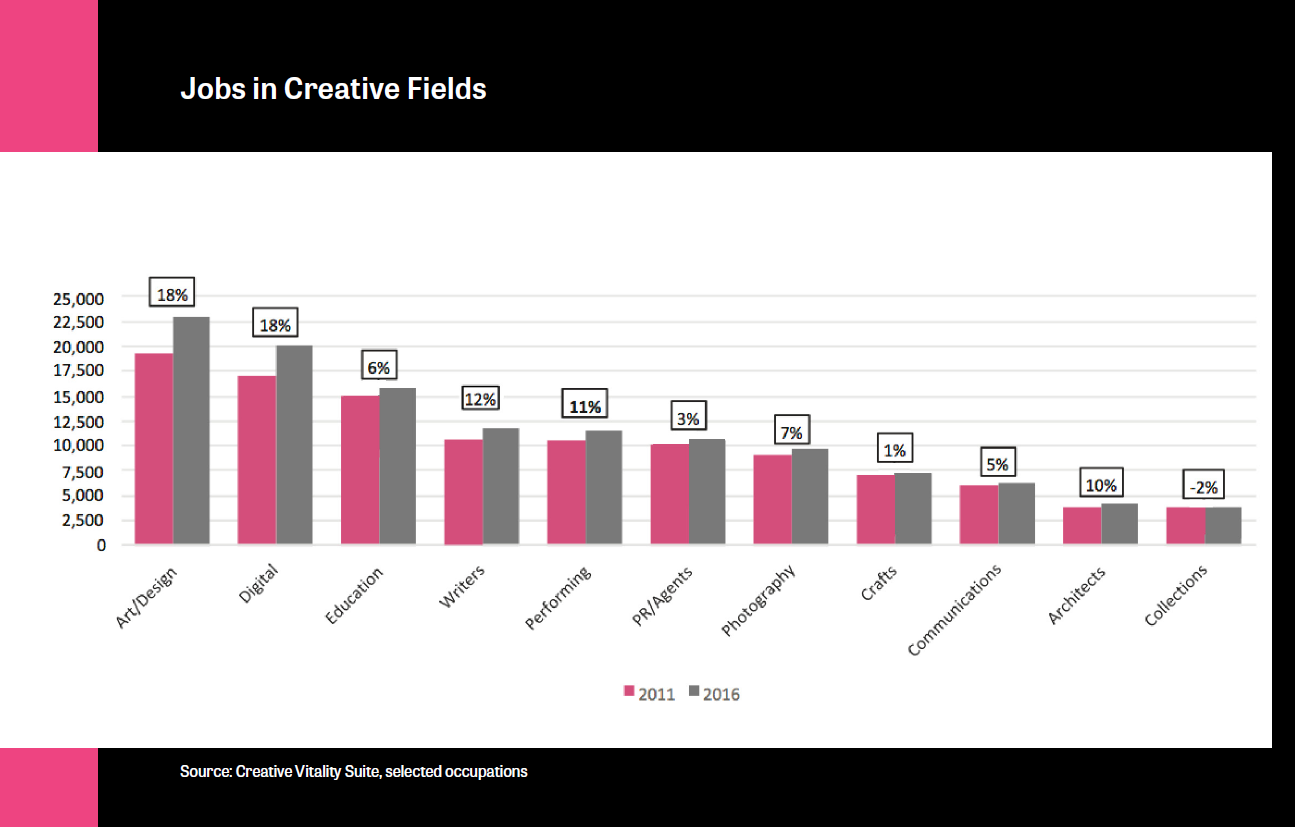Just announced today-
“Knight Foundation believes that the arts play a critical role in connecting people to the places where they live. To concentrate its impact, the foundation has focused its funding in specific communities—especially Detroit, a city long known for its artistic and cultural vibrancy.
The Great Recession wrought significant damage in Detroit, exacerbating economic fragility that had been decades in the making. The arts were not exempt from this pain. Contributions and revenue plunged for even marquee cultural institutions. Yet the city came together around the arts. In what has been called the “Grand Bargain,” philanthropic and public capital was deployed to help the city move quickly through bankruptcy, rescuing the collection of the Detroit Institute of Arts from the auction block in the process.
In light of these developments, Knight wanted to understand how the arts ecosystem in Detroit has evolved over the past decade. The foundation commissioned this study with TDC, a cultural sector research and consulting firm, to determine whether the arts have in fact become more accessible and ubiquitous in these communities. The study sought to address the following key questions:
- How has Detroit’s arts ecosystem (organizations, audiences, funding, creative industries) changed?
- What are the continuing gaps in the system?
- What has been Knight’s role?
This report provides a snapshot of key indicators reflecting how the arts in Detroit evolved over a decade. The analysis synthesized several secondary data sources and interviews with key stakeholders in the community.” (https://www.knightfoundation.org/reports/evolving-arts-ecosystems-a-study-of-detroit)
Key Findings
The study suggests that the arts have played a pivotal role in the resilience of Detroit over the past decade:
- The Arts Have Contributed to the City’s Identity: In the face of declines in Detroit’s population and economy, the arts have forged a common identity, burnishing the city’s image as a bustling hive of do-it-yourself creative activity. As summed up by one local leader: “When Detroit was at its lowest point, the arts doubled down on community investment when everyone else was gone.”
- The Arts Have Grown More Vibrant:There has been significant growth in artistic activity and participation. Arts attendance has risen dramatically over the past decade in both the city and Wayne County. This growth is also reflected in the spending levels of arts organizations in Detroit, which declined during the recession but rebounded by 2015 to surpass 2005 levels. Stakeholders are seeing, as one put it, “a growing number of galleries, arts alliances, artists working in group shows, diversity in the kinds of art being shown. There is just more!”
- The Arts Have Sparked Opportunity: Furthermore, arts and culture have served to bind people to the city and have created professional opportunities. During a period when Detroit experienced a net loss in jobs, employment grew in cultural industries. People were quick to point out, for example, that “the creative aspect of the city has attracted businesses—hip clothing stores, wine tasting spots.”
Download the full report here.
Here are seven ways the Detroit arts scene changed between 2011 and 2015:
- The arts had a transformative impact on Detroit: While Detroit’s population and economy took major hits, the arts helped create a common identity in the city. Of the 432 arts organizations operating in Detroit in 2015, 16 percent were formed since 2005. Growth in the arts sector helped burnish the city’s image as a hive of do-it-yourself, creative activity.
“WHEN DETROIT WAS AT ITS LOWEST POINT, THE ARTS DOUBLED DOWN ON COMMUNITY INVESTMENT WHEN EVERYONE ELSE WAS GONE.” — DETROIT RESIDENT
2. Artistic activity and participation grew notably: Arts attendance has increased dramatically (17 percent city-wide, 28 percent by Knight grant recipients) in both the city and county in the last ten years. The growth is also reflected in the spending levels of arts organizations in Detroit, which declined during the recession but rebounded in 2015 to surpass 2005 levels.

3. The arts has become part of the fabric of the city: Both the interviews with Detroit art influencers and the research highlight that arts and culture have become part of the fabric of Detroit and have taken on an important role in connecting people both to each other, and to the city. It has also been core to its reinvention.
“A GROWING NUMBER OF GALLERIES, ARTS ALLIANCES, ARTISTS WORKING IN GROUP SHOWS, DIVERSITY IN THE KINDS OF ART BEING SHOWN. THERE IS JUST MORE!” — DETROIT RESIDENT
4. Total revenue generated by arts organizations rose significantly:Revenue contributed from individuals and the public and private sectors, as well as earnings from programming, sales, rentals and investment grew by 40 percent between 2011 and 2015. Contributed revenue still accounts for well over half of all revenue generated by arts organizations, but program-related revenue and other revenue sources both increased substantially.
5. The number of jobs in the arts sector rose: Arts and culture has also served to bind people to the city and create professional opportunities. From 2011 to 2015, a period when Detroit experienced a net loss in jobs, there was still a 10 percent employment growth in the cultural sector.

6. Foundations and corporations have helped expand a vibrant arts scene: Foundation funding (47 percent) and corporate giving (21 percent) for arts in Detroit grew considerably from 2011–2015. Individual arts giving grew by 12 percent, but trailed the national growth rate of 27 percent for individual arts giving. Government funding (-13 percent) was the only contributed funding source to decrease.
7. There are still some big challenges, especially financial sustainability:Individual artists are still struggling to earn a living wage and arts organizations have little unrestricted capital. The percentage of organizations with less that 2.5 months of unrestricted net assets increased from 27 percent in 2005 to 38 percent in 2015. A growing number of them — about 38 percent — lack cash reserves or an adequate endowment. They must fundraise every year just to support operations.
Image provided by the DIA. All information cited in this article is from the Knight Foundation website.
The post Knight Foundation Releases New Detroit Study “Evolving Arts Ecosystems” and $20 Million in Funding appeared first on PLAYGROUND DETROIT.
